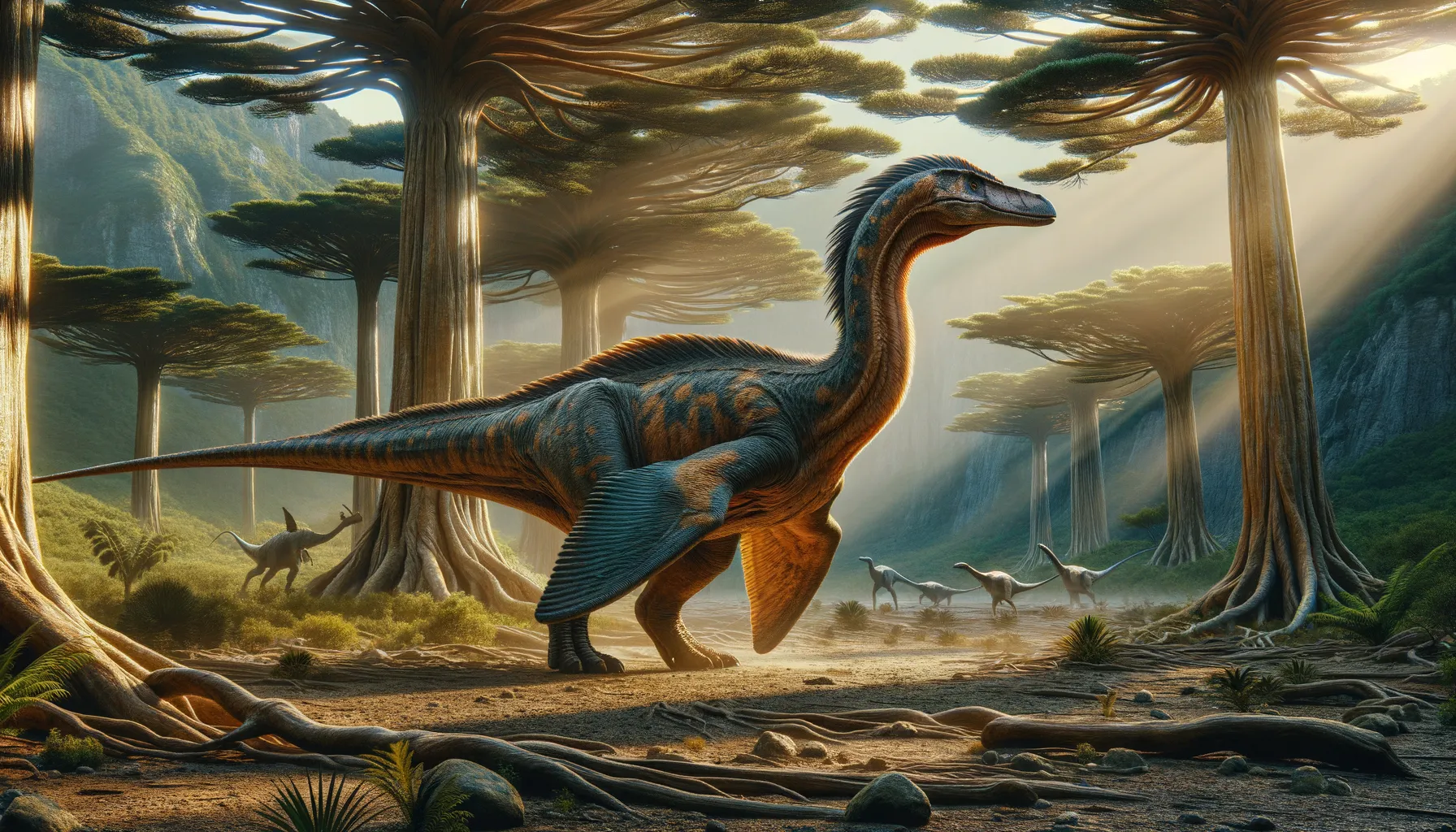
Barsboldia
Discover the giant of the Cretaceous age!
Period
Cretaceous
Length
Approximately 10 meters long.
Height
Roughly estimated at 4 meters tall.
Weight
Approximately 2-3 tons.
Barsboldia was a large dinosaur that lived during the Late Cretaceous period. Known from limited fossil remains, it belonged to the hadrosaurid family, often characterized by their duck-billed appearance. Barsboldia is thought to have inhabited areas that are now part of Mongolia. The dinosaur is named in honor of scientist Dr. Rinchen Barsbold, a notable paleontologist. Its fossils provide important clues about the diversity and distribution of hadrosaurids in Asia.
Diet
Barsboldia was a herbivore, primarily feeding on plants. It likely consumed a variety of vegetation, including leaves, twigs, and possibly fruits, which were abundant in its habitat.
Hunting
As a herbivore, Barsboldia did not hunt for food. It would instead graze peacefully, possibly moving in herds to forage for plant material.
Environmental challenges
Barsboldia faced environmental challenges such as climate changes and natural disasters. Shifting sea levels and volcanic activity might have influenced its habitat availability. Competition for resources with other herbivorous dinosaurs could also have posed a significant challenge.
Speed
Barsboldia likely moved at a slow, steady pace.
Lifespan
Estimated to be around 20-30 years.
First discovery
Discovered in 1981 by Polish-Mongolian expeditions.
Fun Facts
- Barsboldia was a dinosaur that lived during the Late Cretaceous period, about 70 million years ago.
- It was named after the famous Mongolian paleontologist Rinchen Barsbold, who made numerous contributions to dinosaur research.
- Barsboldia is known from fossil remains found in Mongolia, specifically in the Nemegt Formation, which is famous for its rich deposits of dinosaur fossils.
- This dinosaur is believed to have been a large herbivore, meaning it fed on plants.
- Barsboldia was part of the hadrosaurid family, often referred to as 'duck-billed' dinosaurs due to their distinctive skull shape.
- Its fossils are not very complete, so paleontologists use related species to infer its likely characteristics and behavior.
- Barsboldia's large size likely helped it fend off predators and reach high vegetation for feeding.
Growth and Development
Crucial to Barsboldia’s development was its ability to grow quickly to a size that deterred predators. Its skeletal structure indicates a robust build, suggesting efficient resource utilization for growth. As a hadrosaurid, it likely followed a growth pattern seen in other duck-billed dinosaurs, maturing relatively quickly.
Habitat
Barsboldia inhabited what are now arid and desert-like areas in Mongolia. In its time, these regions would have been lush with rivers and forests. This environment provided a supportive ecosystem for its herbivorous diet. Seasonal changes in this habitat could affect its food availability.
Interaction with other species
Barsboldia likely shared its environment with other dinosaur species, including predatory theropods. These interactions might have involved evasion and defensive behaviors due to its size. Socially, it may have interacted with other hadrosaurids, possibly forming mixed-species herds for mutual protection.
Natural lifespan
Barsboldia likely lived up to 30 years under natural conditions.
Reproduction
Barsboldia reproduced by laying eggs, as with other dinosaurs. Nests likely contained multiple eggs, protected by vegetation layers. Parental care might have involved guarding nests and young, as inferred from related species.
Social behaviour
Likely social in nature, Barsboldia possibly moved in groups to protect against predators. This behavior would have allowed them to efficiently share resources and collaborate in raising young. Their herd dynamics might also involve complex communication methods.
Fossil locations
The fossils of Barsboldia have been predominantly found in Mongolia. The type specimen was excavated from the Nemegt Basin, which is renowned for its rich dinosaur fossil beds. These locations have provided critical insights into the diversity of Late Cretaceous dinosaur fauna in Asia.
